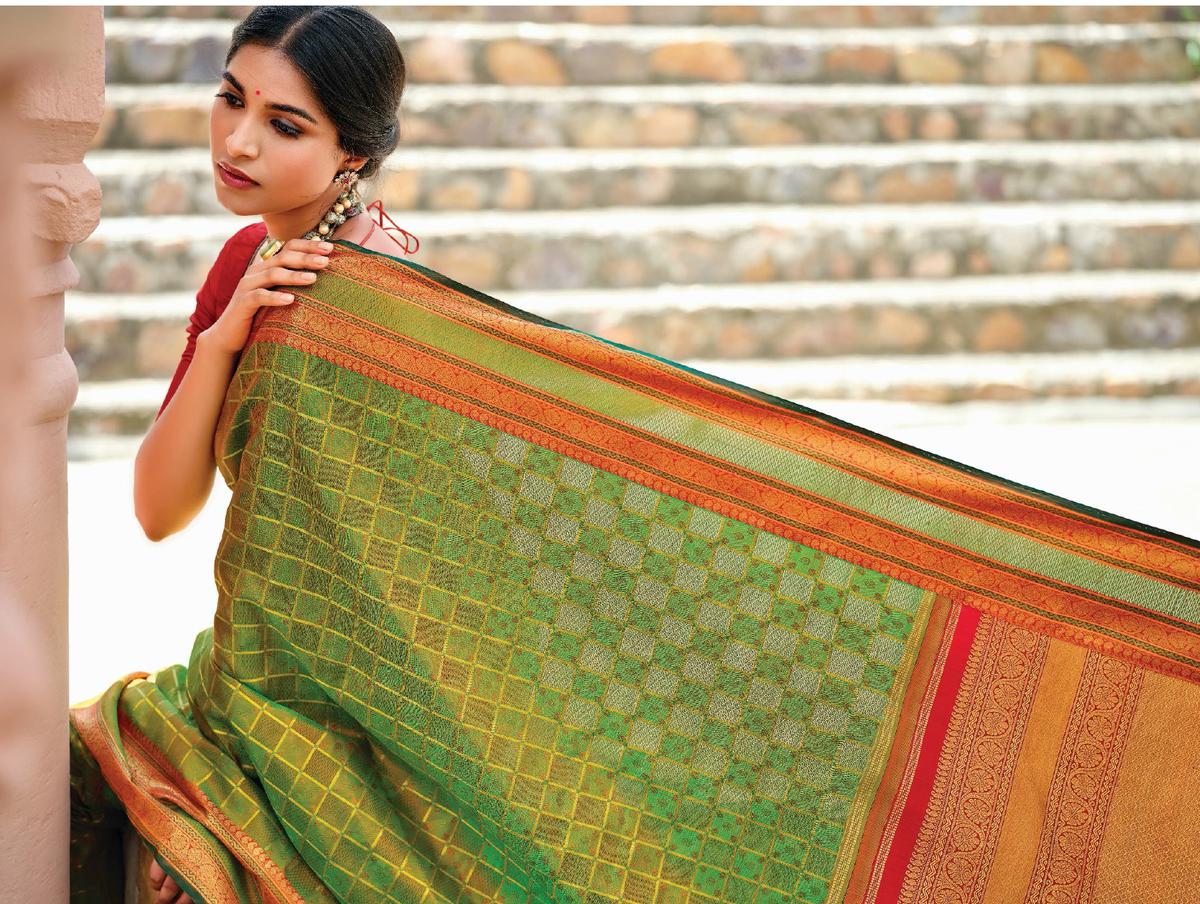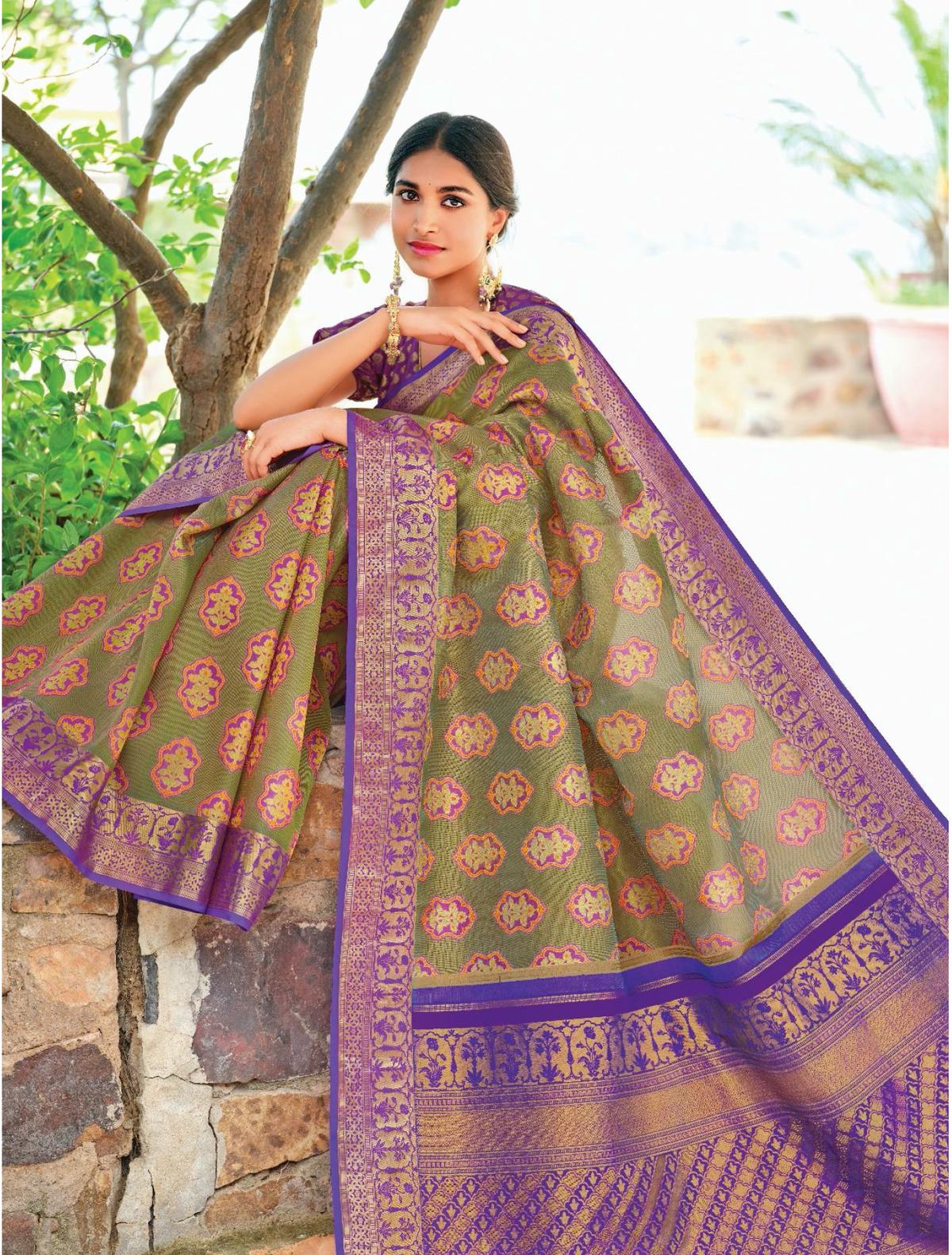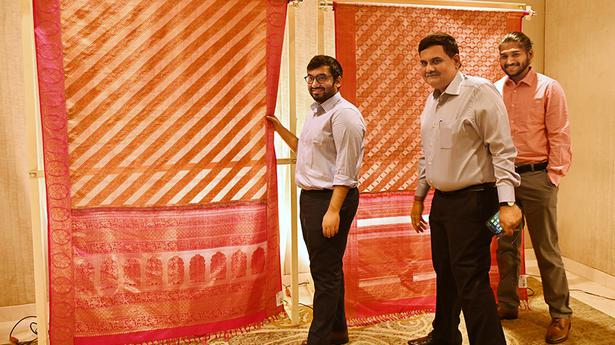RmKV Silks has , a 30-year-old brandlaunched handwoven natural dye silk sariand light weight lino silk saris for this festival season
RmKV Silks has launched handwoven natural dye and light weight silk saris this festival season
A korvai kanjivaram in mint green (derived from mulberry leaves) shimmers with lotus motifs in gold zari and is highlighted by a dull arakku (maroon, derived from Indian madder) 11-inch border. Six more such saris crafted in combinations of crimson, red, indigo and pink, were unveiled at RmKV Silks on September 14. What makes this line special is that they are all woven in natural dyes. “They are made using natural dye yarns and handwoven by the weavers of Kanchipuram,” says Shankar Kumaraswamy, director, RmKV Silks, founded in 1924.
Much in vogue till 1856, natural dye gave way to the synthetic version, which was cheaper and more convenient to use. But toxic effluents from synthetic dyes affect our environment. “We are making an attempt to revive our lost textile tradition and doing our bit to protect the planet,” he says.
RmKV Silks has launched Naturals range of silk saris hand woven with natural dyed silk yarns
| Photo Credit: special arrangement
The natural dye library
The R & D wing of RmKV Silks located at Arani, a weaving cluster in Thiruvannamalai district, has been involved in the development of natural dyes over the past 10 years. “Our 30-member team, comprising weavers, dye makers, and textile engineers, was trained by Toofan Rafai, an acclaimed painter and vegetable and natural dye specialist from Gujarat, ten years ago. This doyen of natural dye came to our R & D in Arani and trained 30 members of our team a decade ago. After many trials and errors, we developed over 60 different shades,” says Shankar.
Founded in 1924 by RmK Visvanatha Pillai in the small business town of Tirunelveli, RmKV is well known for name when it comes to wedding silk sarees. The brand has showrooms in spread across Chennai, Tirunelveli, Coimbatore, and Bengaluru. Over the past 30 years, RmKV has been pioneering innovations classified under design, color and fabric. Some of its iconic innovations including Hamsa Damayanti (handwoven silk sarees inspired by artist Raja Ravi Varma’s paintings), silk sarees with 50,000 rare colours and shades, and grand reversible silk saris, to name a few.

Lino light weight kanjeevaram silk sari
| Photo Credit: special arrangement
The Naturals collection features sarees in rich red and amber tones derived from manjishta (Indian madder) and arraku (lac), and a combination of these also result in deep crimson. ”Natural dye extraction and preparation is a time-consuming and labour-intensive process,” he explains. For example, it takes around 40 days to make the indigo dye (used for all shades of blue) blocks, including 19 days of fermentation of the dye in an earthen pot.
Price points
“Naturally, the cost of manufacturing also goes up, but we have ensured that the burden is not transferred to the customers, and therefore have consciously priced our saris,” says Shankar, adding, “We are in the process of developing newer shades using natural ingredients.” The range is priced between ₹15,000 and ₹30,000. Alum stone, fenugreek, turmeric, catechu resin, sappan wood, myrobalan, red soil, pomegranate shells, mulberry leaves, and marigold flowers are some of the natural ingredients that are traditionally used to create natural dyes.
“We pay attention to the feedback we receive. We have a strong R &D team with the help of which we came up with our second innovation for this year, Lino silk saris,” says Pranav Kumaraswamy of RmKV Silks. Lino silks are handwoven kanjivarams that are 40% lighter. Silk saris usually weigh one kilogram on an average, but these saris weigh 600 grams approximately.

Lino light weight silk sari
| Photo Credit: special arrangement
The Lino collection
The saris on display, done in gold, resplendent in bold colours and artistic themes and motifs, fall well and are classy. A sunset yellow one with a contrasting crimson border, for instance, features the Taj Mahal motif. “The Lino saris were created especially for the younger generation, and are handwoven using different techniques to derive a light texture, and provide breathability,” he says.
RmKV Silks has used two patented techniques to develop the Lino silk sari, namely, the KV technique (named after K Viswanathan, one of the founders) and the Lino technique. The KV technique is applied to derive an interlocking meenakari effect in the fabric, and the Lino technique lends a gauzy texture. “The whole process necessitated the twisting of the yarn in a unique way, followed by a complete restructuring of the looms,” says Pranav.
The Naturals and Lino Silk range are available across all RmKV Silks showrooms and prices start at ₹ 25,000.




.jpg)



